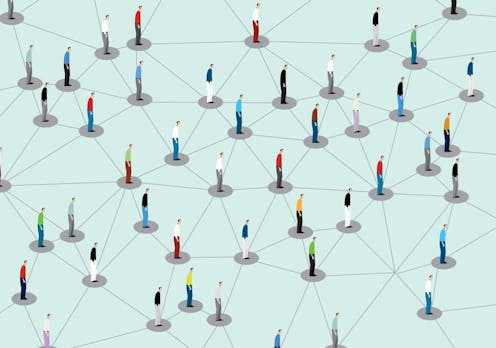Victoria's coronavirus contact tracers are already under the pump. What happens next?
- Written by Gerard Fitzgerald, Emeritus Professor, School of Public Health, Queensland University of Technology

The emergence of significant community transmission of COVID-19 in Melbourne over the past week is greatly concerning to the whole of Australia.
Earlier this week, Victoria’s chief health officer Brett Sutton said the state was struggling to cope with the volume of contact tracing required for more than 2,500 people in self-isolation, who must have all their close contacts traced and contacted:
[…] we’re at the limits of managing that number.
Since then, the number of cases in Victoria has risen further still.
What options are available for increasing the pool of contact tracers in Victoria, or any other state that finds itself handling significant rises in COVID-19 cases?
Read more: Victoria is on the precipice of an uncontrolled coronavirus outbreak. Will the new measures work?
Remind me, what are contact tracers?
The key strategy to preventing further community transmission is to identify all cases through extensive testing, isolate people who test positive, and then trace their close contacts.
These contacts require initial testing to see if they are also potential spreaders, but more importantly they need to be isolated and closely monitored. Should they develop symptoms, they also need to be tested.
The process of identification of cases, ensuring isolation and monitoring, identifying contacts and following up each of those requires extensive effort.
Read more: Explainer: what is contact tracing and how does it help limit the coronavirus spread?
Every patient who tests positive needs to be interviewed to identify where they have been during the potentially infective stage of the disease, and who they may have come into contact with.
In some circumstances, this may be limited to family members, while in others it may involve following up others who may have been in the same locations, such as workplaces, restaurants, shops or public transport.
All these people need to be made aware of the risk and followed up. This is challenging in a free society. It requires cooperation from the community. It also requires understanding that some who may be spreading the disease are not aware they are doing so.
Read more: Lockdown returns: how far can coronavirus measures go before they infringe on human rights?
This task is traditionally the role of public health workers — including doctors, nurses and those with specific public health qualifications — called contact tracers.
They are the real heroes of this effort, doing mundane work below the radar to keep the community protected.
In normal circumstances, these staff monitor diseases that are present in the community and identify and follow up notifiable disease such as measles, HIV, hepatitis or tuberculosis.
These public health workers have been working desperately hard for months and now those in Victoria are being asked to step up to the mark again.
Read more: By persisting with COVIDSafe, Australia risks missing out on globally trusted contact tracing
How can we expand the pool of contact tracers?
The public health workforce needs to be expanded rapidly to handle the increased workload. There are several ways to do this, some of which have already been implemented in Victoria.
We could reallocate people from other public health functions, which could immediately provide a ready and well-trained workforce.
But this will impact other vital public health protections, including surveillance of other disease, health promotion, screening, early diagnosis and intervention. Diverting staff from these efforts may also have long-term health consequences.
Read more: Coronavirus: why did England ignore an army of existing contact tracers?
Staff could be deployed from other agencies, including the Australian Defence Force.
While readily available and well-disciplined for the task, only some of these people have the necessary expertise to identify cases and trace contacts. Others may need to serve in support roles.
Options include calling in the Australian Defence Force to add to the pool of contact tracers (Department of Defence Australia).Other states and territories could provide support. However, this may require people to relocate to Victoria with the personal disruption implied, as well as the enhanced risk to them and to their families and communities when they return.
This sharing of public health resources across state borders requires significant national cooperation, which has been evident in other parts of Australia’s COVID-19 response.
Finally, people may be recruited from the pool of partly trained people (public health students). While they may lack the practical skills, they will at least bring theoretical knowledge to perform some targeted tasks with specific training. For instance, they could work with experienced personnel to help maintain records or identify contacts.
We have a lot at stake
This new outbreak in Victoria threatens to overwhelm the system’s public health capacity. If that occurs, we can expect large numbers of deaths to follow. We are not there yet, but this outbreak in Victoria is placing the whole country at risk.
So public health workers need all the help and support the Australian community can provide.
Authors: Gerard Fitzgerald, Emeritus Professor, School of Public Health, Queensland University of Technology



